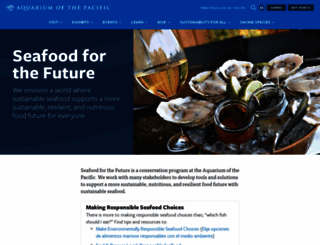Seafood for the Future | Seafood for the Future | Aquarium of the Pacific
Page Load Speed
2.1 sec in total
First Response
44 ms
Resources Loaded
2 sec
Page Rendered
83 ms

About Website
Welcome to seafoodforthefuture.org homepage info - get ready to check Seafood For The Future best content right away, or after learning these important things about seafoodforthefuture.org
Take a journey of discovery through the world’s largest ocean at the Aquarium of the Pacific in Long Beach, California.
Visit seafoodforthefuture.orgKey Findings
We analyzed Seafoodforthefuture.org page load time and found that the first response time was 44 ms and then it took 2.1 sec to load all DOM resources and completely render a web page. This is quite a good result, as only 40% of websites can load faster.